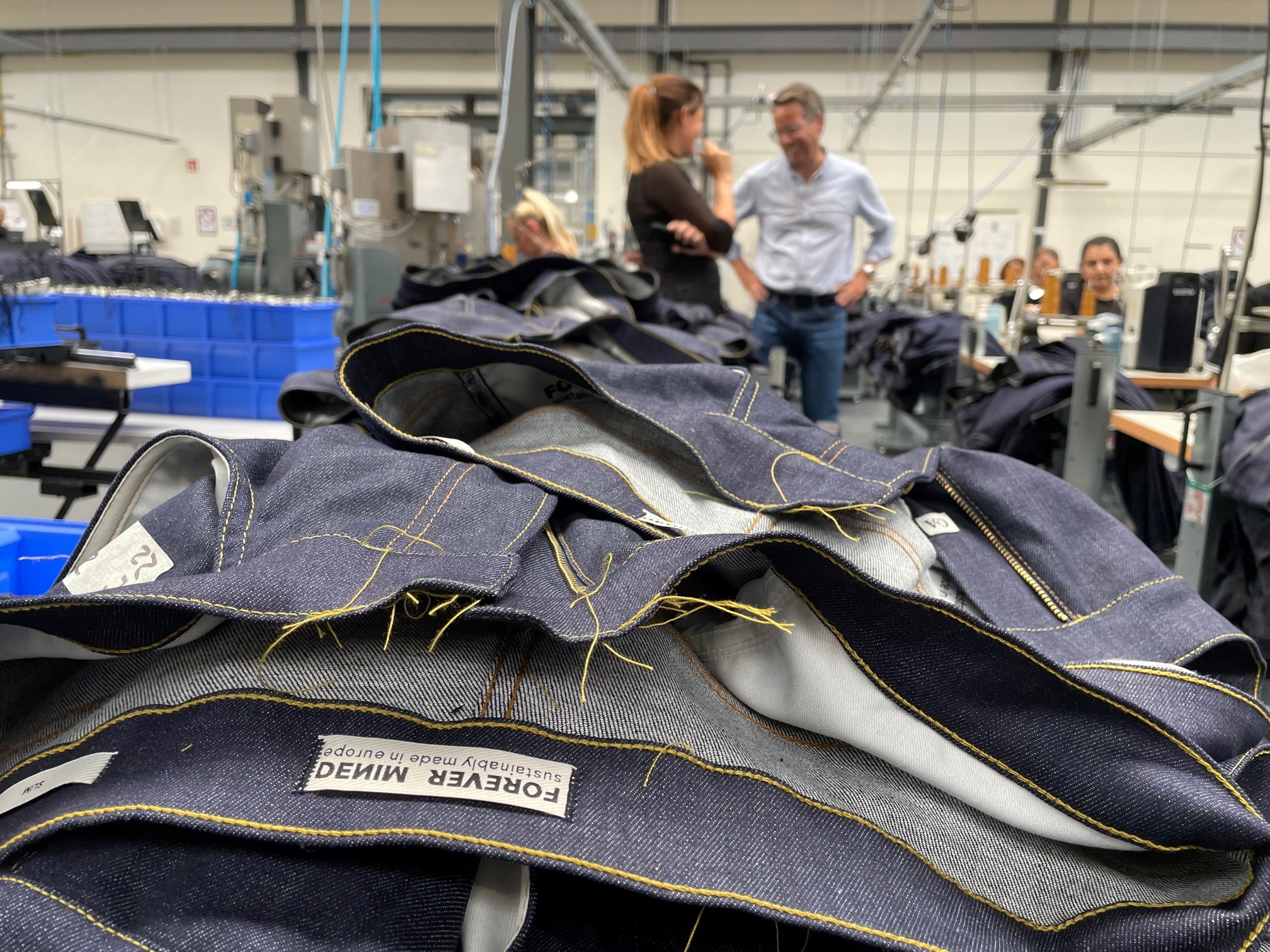Introduction
In an era where climate change and environmental degradation are pressing global concerns, the fashion industry is undergoing a significant transformation. Among the various clothing items undergoing this green revolution, none is more iconic than jeans. Once a symbol of rugged individualism and casual cool, jeans are now at the forefront of sustainable fashion, redefining how we think about style and its impact on our planet. The quest for sustainable jeans embodies a commitment to eco-friendly practices that minimize environmental harm while ensuring social responsibility throughout the production chain.

The Environmental Cost of Traditional Jeans Manufacturing
Traditional denim manufacturing has long been criticized for its hefty environmental footprint. From water-intensive cotton farming to the toxic chemicals used in dyeing and finishing processes, the journey of a pair of jeans from raw material to retail often leaves a trail of pollution and resource depletion. It is estimated that producing a single pair of conventional jeans consumes around 2,000 gallons of water and releases harmful substances like lead, mercury, and arsenic into waterways.
Sustainable Innovations in Denim Production
In response to these challenges, the industry has embarked on a journey towards sustainability, adopting innovative techniques and materials that significantly reduce environmental impact. Here are some key aspects of this revolution:
- Organic and Recycled Materials: The use of organic cotton reduces the amount of water and pesticides needed in cultivation. Additionally, recycled cotton and polyester made from post-consumer waste reduce the reliance on virgin resources. Some brands are even experimenting with alternative fibers like hemp, which requires less water and no pesticides.
- Water-Saving Techniques: Advanced technologies like laser finishing and ozone washing have replaced traditional stone-washing and chemical treatments, drastically cutting water usage. Laser finishing, for example, precisely distresses denim without water, while ozone washing uses less water and energy to achieve the desired fade.
- Closed-Loop Systems: These systems recycle water and chemicals within the manufacturing process, minimizing waste and pollution. By capturing and treating wastewater, factories can reuse it, significantly reducing freshwater consumption.
- Non-Toxic Dyes and Finishes: Natural dyes derived from plants and safer, eco-friendly chemicals are replacing hazardous substances. Innovations like AirDye technology use a waterless process to apply color, saving millions of gallons of water per year.
- Circular Economy Models: Brands are exploring circular economy models where jeans can be returned, repaired, upcycled, or recycled at the end of their life, reducing waste and promoting a continuous cycle of resources.
Social Responsibility and Ethical Practices
Sustainability in the denim industry goes beyond environmental considerations to encompass fair labor practices and ethical sourcing. Ensuring living wages, safe working conditions, and the prohibition of child labor are integral to creating genuinely sustainable jeans. Many brands are partnering with certification bodies like Fair Trade and Bluesign to guarantee adherence to these standards.
Consumer Awareness and Demand
Consumer awareness plays a pivotal role in driving this shift towards sustainable jeans. As shoppers become more informed about the environmental and social implications of their purchases, demand for eco-friendly options grows. Brands that can demonstrate transparency in their supply chains and a commitment to sustainability are gaining a competitive edge.

Challenges and the Path Forward
While the movement towards sustainable jeans is promising, several challenges persist that need addressing to fully realize the potential of eco-friendly denim:
- Scaling Up: Transitioning to sustainable practices often requires significant initial investments in new technology and infrastructure. Smaller manufacturers may struggle to afford these changes, creating a barrier to entry for widespread adoption.
- Education and Awareness: Despite growing interest, many consumers still lack understanding about the environmental impact of their clothing choices. Education campaigns and clear labeling can help raise awareness and guide informed purchasing decisions.
- Standardization and Certification: The absence of universal sustainability standards can lead to confusion among consumers and greenwashing by some brands. Developing and adopting clear, verifiable standards and certifications can enhance trust and facilitate comparison across products.
- End-of-Life Solutions: While recycling and upcycling programs are emerging, effective end-of-life management for jeans remains a challenge. Encouraging circular design principles and investing in infrastructure for textile recycling can help close the loop.
Collaboration and Innovation
Overcoming these hurdles will require collaboration between brands, suppliers, governments, and consumers. Industry-wide initiatives, such as sharing best practices and collectively investing in research and development, can accelerate progress. Public-private partnerships can also drive policy changes that incentivize sustainable practices and penalize environmentally harmful ones.
Innovation continues to play a crucial role. For instance, the exploration of biodegradable fibers and bio-based finishes that decompose naturally could redefine the end-of-life cycle for jeans. Digital technologies, like 3D printing and AI-driven design, can optimize material use and minimize waste during production.
The Role of Consumers
Consumers hold significant power in driving change. By choosing sustainably produced jeans, supporting transparent brands, and engaging in responsible disposal practices, individuals can contribute to a greener fashion industry. Adopting a ‘buy less, choose well, make it last’ mentality encourages quality over quantity, prolonging the lifespan of garments.

Challenges and the Path Forward for Sustainable Jeans
While the strides made in sustainable denim production are commendable, there are still several challenges that need to be addressed to ensure a comprehensive and lasting transformation of the industry.
- Scaling Up Sustainability: One of the primary challenges is scaling sustainable practices to meet the global demand for jeans. While smaller brands and niche producers have been pioneers in eco-friendly methods, larger manufacturers must also adopt these practices to create a substantial impact. This requires significant investments in infrastructure and technology.
- Affordability: Sustainable jeans often come with a higher price tag due to the use of premium materials and advanced production techniques. Making sustainable fashion accessible to all, especially in developing economies, remains a crucial challenge. Brands and retailers need to find ways to balance affordability with sustainability without compromising on either front.
- Traceability and Transparency: Ensuring complete transparency across complex global supply chains is difficult but essential. Consumers want to know the origin of the materials, the conditions under which their jeans were made, and the environmental impact at each stage. Blockchain technology offers a promising solution by enabling tracking of materials from source to store.
- Education and Awareness: Continuous consumer education is vital to foster a deeper understanding of why sustainable jeans matter and encourage more mindful purchasing decisions. This includes dispelling misconceptions about quality and durability associated with eco-friendly products.
- End-of-Life Solutions: While recycling and upcycling initiatives are on the rise, effective end-of-life management for jeans is still in its nascent stages. Developing robust systems for collection, sorting, and transforming old jeans into new products is crucial to closing the loop and reducing textile waste.
Innovative Collaborations and Partnerships
Addressing these challenges will require collaboration across the entire value chain, from farmers and fiber producers to manufacturers, brands, retailers, and consumers. Industry alliances, cross-sector partnerships, and government support can facilitate knowledge sharing, standard setting, and the implementation of best practices.
For instance, collaborations between fashion brands and technology companies can expedite the development and adoption of groundbreaking sustainable solutions. Partnerships with NGOs and social enterprises can help improve worker welfare and community development in cotton-producing regions.

Conclusion
The revolution in sustainable jeans is not just a trend; it is a necessary evolution for an industry that has long contributed to environmental stress. By embracing innovation, adopting eco-friendly practices, and prioritizing social responsibility, denim manufacturers are charting a course towards a greener, cleaner future. As consumers continue to demand sustainable alternatives and support brands walking the talk, the dream of a fashion industry in harmony with nature moves closer to reality. Sustainable jeans are thus not merely garments; they represent a statement of our collective commitment to preserving the planet for future generations.

